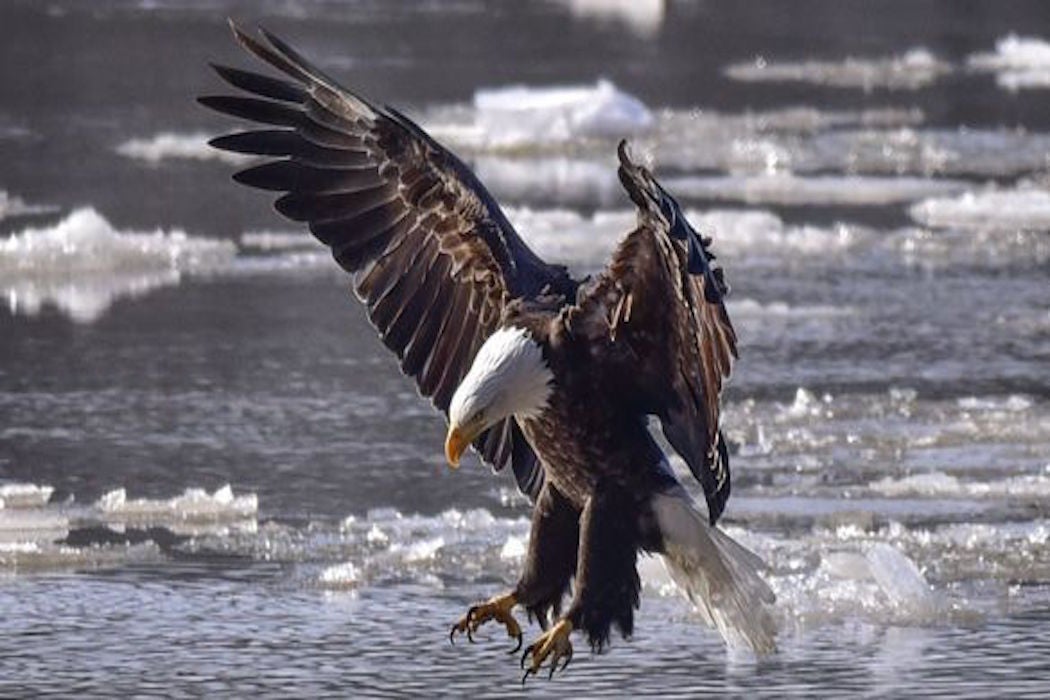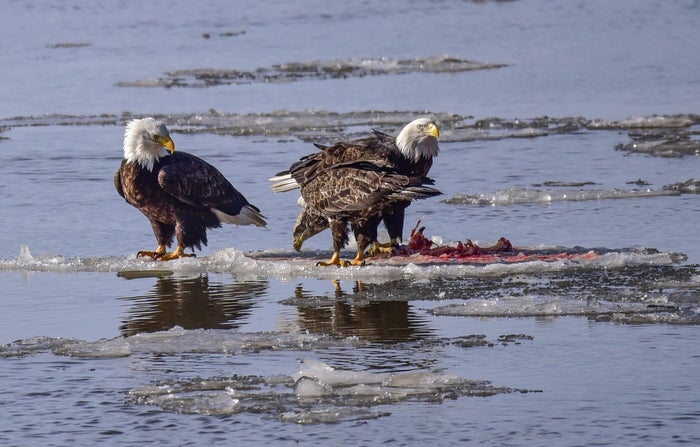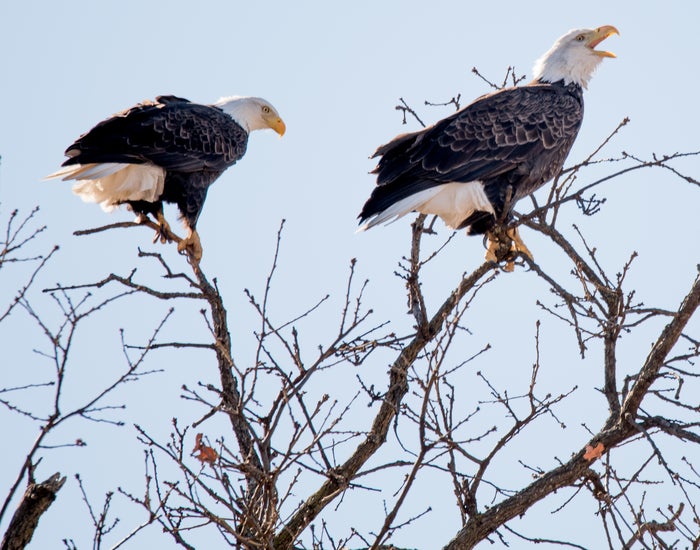The bald eagle glides down to the river, its wingspan reaching over six feet. As it nears the water, the raptor quickly folds its wings to slow down, dips its sharp claws into the currents, and then soars up again, holding onto a still-flapping fish.
It’s wintertime in Illinois, which means that about 3,000 bald eagles have come to hunt, nest, and breed. The eagles migrate to the area for the winter from places farther north where waterways freeze, cutting off their access to fish, explains Rachael Heaton at TreeHouse Wildlife Center in Dow, Illinois. Here, the confluence of three great rivers—the Illinois, the Missouri, and the Mississippi—provides the raptors with plenty of food.
The natural spectacle draws bird watchers and tourists from all over, says Brett Stawar, president of the Great Rivers & Routes Tourism Bureau. “American bald eagles are a sight people never grow tired of seeing. Thousands of people come to our region each year to get a glimpse of the birds in the wild.”
Raptor-watching in Illinois is a relatively recent phenomenon. In the 1960s-1970s, the state’s bald eagle population plummeted, just like everywhere else in the country, due to widespread use of DDT. The pesticide and an environmental pollutant impaired the birds’ calcium metabolism necessary for healthy egg production. By 1963, the total bald eagle population of the contiguous forty-eight states was estimated at only 417 pairs, including 148 pairs in Michigan, Wisconsin, and Minnesota. By 1970, only three or four pairs remained along the north shore of Lake Superior and they produced no offspring.
To save the birds from extinction, scientists tried to breed some of them in captivity. In 1969 they paired up a four-year-old Alaskan male and a seven-year-old female from Alabama that was found with a broken wing near a high-voltage line. The two birds were placed into a large, specially-designed flying pen with perches and a nest, lined with pine bark mulch. Researchers also left sticks on the ground to provide the pair with supplemental nest materials. The birds had plenty of food and enjoyed a diverse menu of rats, hamsters, guinea pigs, young chickens, and whole fish. After a few unsuccessful breeding attempts—infertile eggs and chicks killed by a freezing storm—the pair produced three viable offspring in 1973, and two survived.
Several other attempts were made to breed the endangered birds in human care. Some researchers even looked into improving the quality of the raptors’ semen—it was sometimes contaminated with their highly acidic urine, which kills spermatozoa. Scientists collected the raptors’ sperm manually, washed it to get rid of the lethal acid, then inseminated the females artificially. Despite all the work, the raptors generally did not reproduce well in captivity.
They did, however, rebound in the wild, thanks largely to the DDT ban that went in effect in 1972. They are now officially back from the brink, and were taken off the endangered species list in 2007. Illinois’s riverbanks have become a great bird-watching site during winter migrations. But some individuals are also starting to settle in, says Heaton who works at the TreeHouse’s wildlife hospital and is starting to see more raptors being admitted. It’s happening quickly, too, she says. “When I started here in 2012 we almost never admitted a bald eagle, and within the last year I admitted several.”
Once a Week
Some birds are brought in because they are injured in fights over territory—which means they are settling in the area. That makes sense, according to Heaton. Bald eagles are very territorial, and as their numbers rebound, they need more space—so as some come in from the north in winter, they may settle, nest, and call the river’s confluence spot their home. “We used to only see them in winter, and now we see them every day,” Heaton says. In the wintertime there are even more of them for the bird watchers to enjoy.












